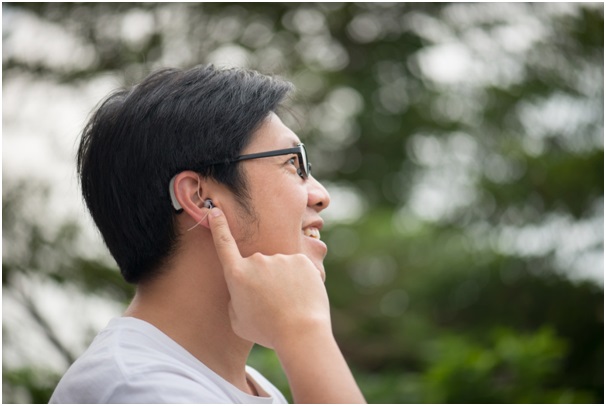Over 28 million Americans use hearing aids which proves it’s an effective tool to improve people’s quality of life.
But, like with most technology, it’s important to correctly use these devices otherwise they won’t work well. If you’re unfamiliar with hearing aid mistakes, you’ve come to the right place.
Here are the seven most common ones.

1. Putting In New Hearing Aids Straightaway
After buying hearing aids, refrain from putting them in straight out of the box. This is because features vary between devices and they’re likely not at an optimal setting for your case.
Before wearing hearing aids, read the documents that come with the device and figure out how to get the cleanest sound and improve the hearing aid’s function. Take time adjusting the device and use features like Bluetooth or noise filters so you have the best experience.
2. Ignoring the Adjustment Period
If you buy a new pair of glasses, your eyes need to adjust to the lenses and the shape of the frame. This works similar to hearing aids because you won’t instantly get the best sound quality.
It’ll take several days to adjust to the hearing aid fitting especially if you’ve never worn them before. Remember, when your hearing is declining then the world will sound far louder so it’ll take a while to get used to it.
Insert your hearing aids and leave them. You must fight the urge to take them out and if this is the case, ask yourself why. Is everything too loud? Perhaps the background is overwhelming? If yes, then go to a quiet place and talk with a friend to see if you’re talking too loud or the sound is too low. Doing this lets you make necessary adjustments.
When the hearing aid feels uncomfortable, remove it for a short period and put it back in until you’re used to it. But if this is continuous then go back to the retailer, discuss the issue, and swap it for a more suitable model. It’s also possible to get a loan for hearing aids if necessary.
3. Not Getting a Proper Fitting
While comparing hearing aid costs and models, make sure you get a fitting. The device must be comfortable, easy to remove, and amplify the surrounding sounds. If not, you’ll need a refit.
During the fitting session, you’ll go through hearing tests to find the right power of the hearing aid. The doctor will also make molds of your ears and run a special diagnostics so the device produces a clear sound.
Consider how your hearing aid feels and works. Take note if one ear feels tighter than the other or if it’s difficult to listen in large rooms so your doctor can make amendments.
4. Poor Maintenance
Once you receive your hearing aids, consider the warning signs listed in the documentation so you know what to avoid like using hair care products while they’re in. Cleaning both your ears and the device is essential so check what the manufacturer recommends so the machine isn’t compromised.
Hearing aids are sensitive to moisture so avoid leaving them in the bathroom especially during a shower. You should also wash your hands before touching the device or batteries as your hands’ natural oils can affect how well they work.
5. Not Knowing How Hearing Aids Work
Familiarize yourself with common hearing aid features and know how water-resistant yours are to avoid any accidents. Many models have advanced settings so talk with your doctor to see which is the best for you. Remember, you’ll wear these for many years so decide whether a certain setting will benefit you in the future.
6. Forgetting Spare Batteries
Hearing aid newbies often learn this lesson at the worst moment. A hearing aid’s battery life varies depending on how you use it and the external environment. Because of this, keep an extra set of batteries nearby so it doesn’t cut out in the middle of a conversation.
Keep the batteries in a dry, room temperature place, and don’t remove the plastic tab from the pack until you’re ready to use them.
7. Not Practicing Your Hearing Exercises
Although you’re wearing hearing aids, you shouldn’t assume that they’ll do all the heavy lifting.
When you suffer from hearing loss, the part of your brain that interprets sounds is also impacted so you must rebuild those pathways. Do this is by reading aloud because you’re connecting the word (that you read) to the sound (that you say) and the more you do this, the better your hearing aid will work.
If you’re uncomfortable reading aloud then grab a physical copy of your favorite book along with the audiobook and read along. This works the same because you listen to the word while reading it which helps your brain get used to hearing again.
You can also try Starkey’s Hear Coach, complete with three gaming modules that teach you how to communicate better in a loud environment. It increases in difficulty and lets you track your performance over time.
Those Are the Common Hearing Aid Mistakes
Now you know the seven most common hearing aid mistakes.
Don’t put hearing aids in straightaway because they must have an adjustment phase so you can tweak the sound and familiarize yourself with the features. You should also keep spare batteries with you, regularly practice hearing exercises, and look after them. Good luck!
Hopefully, you’ve found this article useful. If yes, then please check out our posts on everything from Business to Real Estate.











